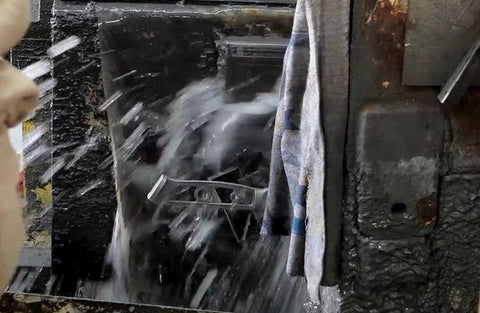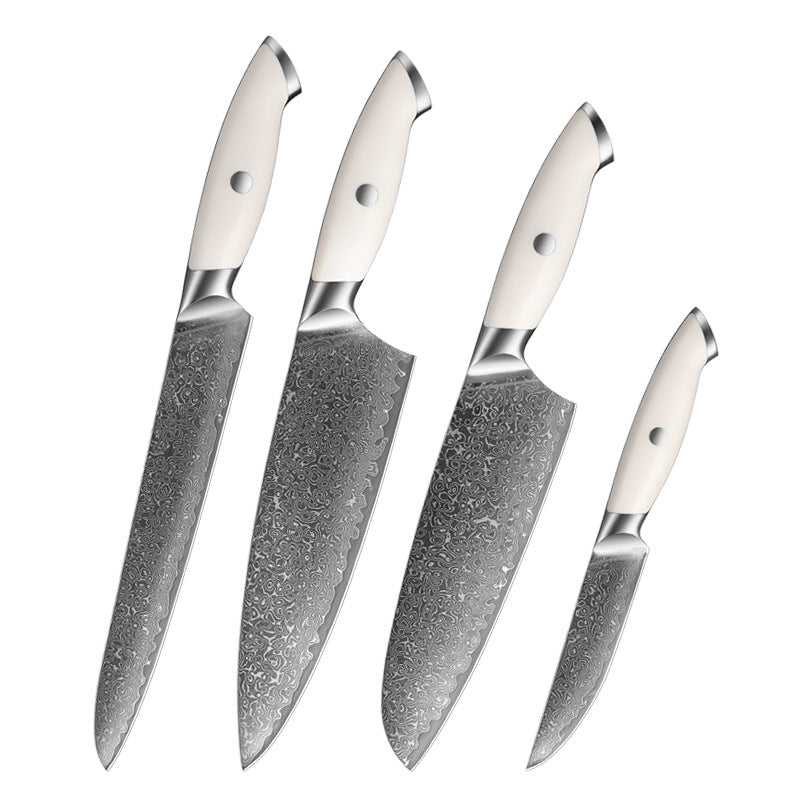Damascus steel, also known as crystalline pattern steel and cast pattern steel, is a perfect combination of ancient powder metallurgy and forging technology. How is this steel made into a Damascus knife? Today, the author takes the Damascus knives produced by Seiko Knives, which is currently popular on the market, as an example to reveal the relevant manufacturing process.

Step 1:Rough shape cutting.
- The cutting material is based on the size of the knife, the size and thickness of the knife sample, and the knife blank.
- Typing, punching or punching positions.
- Straighten the knife, because the hardware will bend when the knife is opened, use a straightening machine to straighten it, and then tie it into a small ball.

Step 2:Embossingn.
- Exclusive private mould embossing, changing the steel plate and steel structure.
- Through the multi-layer precision process, the pattern can be clearly displayed.

Step 3:Vacuum heat treatment.
- The heat treatment of knives is divided into vacuum heat treatment, kitchen knife furnace heat treatment and nitrogen heat treatment.
- Advantages of vacuum heat treatment: the hardness of the blade is uniform when heated, and the toughness is higher. Including tempering and annealing process, the kerosene coolant is cooled quickly, and the efficiency is fast.
- Heat treatment in kitchen knife furnace: lack of toughness, brittle and easy to break.
- Nitrogen heat treatment: uneven hardness and slow efficiency.

Step 4:Straighten
- Quality inspection steel.
- After the heat treatment process, the steel plate is partially bent and needs to be straightened by a straightening machine to prepare for the next step of welding.
Step 5:Welding
- The blade blank and the handle casting are welded by an automatic welding machine. The welding wire is 2.0mm or 2.4mm in diameter, and the current is 160A. Double-sided welding. No heating and heat treatment are required during welding.
- Tempering, so that the whole knife is integrated.

Step 5:Water milling
Single side grinding is to grind the area of the whole knife obliquely to the knife edge.
- Make clamping distance
- Straighten the machine and conduct multi-channel water mill.

Step 7:Mirror polishing
NC Polishing: through multiple mirror polishing with accurate NC program, the knife surface is cleaner, the pattern is clearer, the workmanship is more exquisite and the texture is more high-end.
Step 8:Install the handle
Step 9:Cleaning
Change the traditional manual cleaning products; Professional machines can quickly clean and further prevent rust, remove stains and clean more thoroughly.
Step 10:Sand blasting
Professional sand blasting technology makes the pattern more beautiful and obvious, showing the quality.
Step 11:Sharpened edge
- Artificial wet sharpening edge twice, and the geometric angle of the edge reaches 12-15 °.
- Repeatedly grind the cutting edge with the cloth wheel to make it smooth and burr free.
Step 12:Quality inspection and packaging
- Product manual overall straightening.
- Testing of hardness and toughness.
- Product packaging.
Through the above series of processes, a high-quality Damascus knife is completed. Through the detailed explanation of the manufacturing process of Damascus knife, you will understand that the quality of a good knife needs to be carefully carved and checked in each process. The reason why Seiko Knives Damascus knife introduced by the author is popular is to keep improving in product details. If you want to have a real Damascus knife, come and buy it!
